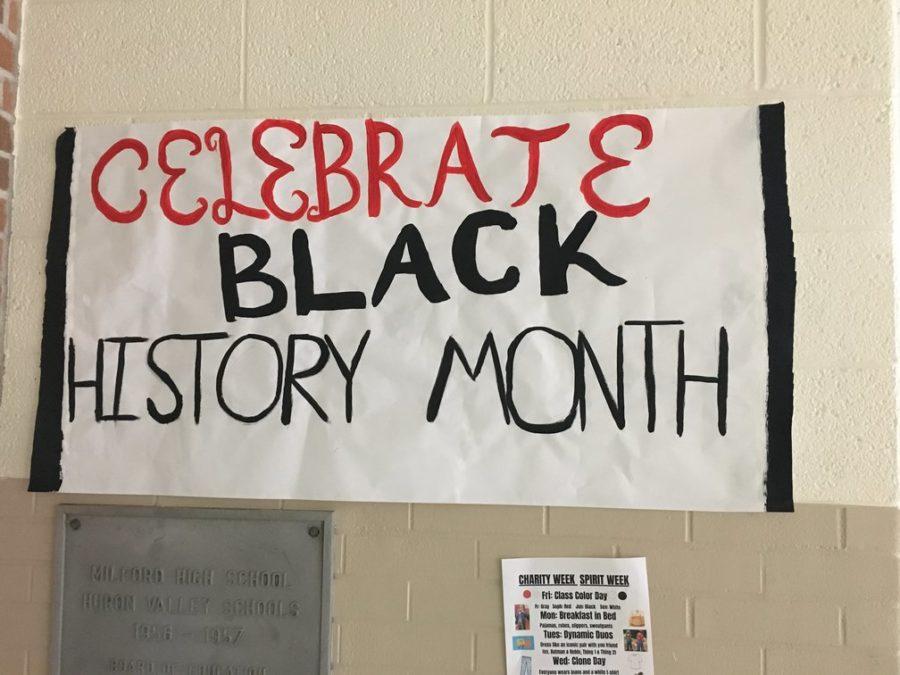Milford celebrates Black History Month
February 28, 2017
Black History Month holds its origins dating back to the early 20th century, when Carter Woodson, proposed the celebration because of under-representation of black people in American history classes.
It is quite noticeable simply looking through a U.S. history book that the majority of the focus is on the accomplishments of white men in our nation.
In 1926 Woodson created “Negro History Week” to bring attention to this issue and implement a grander focus in schools of black history. Since then, every year Black History Month is celebrated in schools nationwide, most notably in elementary schools, with a bit of a decline reaching the high-school level.
This year at Milford High School, students in the Equality Club decided to revamp the celebration of this month. Their ways of promoting this month have encompassed creating posters to put around the school, finding songs to play over the PA by black artists that had a cultural impact, and find ways to highlight parts of the month that often get neglected by stating facts on the announcements.
Members of the club have also decided to start a fundraiser for Hosea Helps Feed The Hungry. The foundation was named after a civil rights activist, Hosea Williams. A member of the club, Will Cairns, states that “it’s important we honor his work by continuing it.”
An issue that arises during Black History Month is the focus on white men that had contributed, like Abraham Lincoln, to abolish slavery, instead of focusing on the black individuals who had to fight for their rights long after then.
“It’s important to understand that it took more than slavery to be abolished for a black man to become president,” Cairns stated. Even today, black Americans are still not equal enough, as seen in police brutality and the immense cultural appropriation that is dealt with daily, and organizations like Black Lives Matter to empower and fight for these matters.
There has been a noticeable decline in the celebration and simple awareness of Black History Month, and there are many contributing factors to it. Nationwide, the media coverage of this month is not much to look at, and district-wide, it may be due to the lack of diversity or “strong focus of curriculum,” stated Cairns.
This month is a time of reflecting on the past and realizing what it means to be a black American. This is a month where we are able to recognize the accomplishments, and realize the progress that is still necessary. This a month where we are able to empower young black Americans.
“This month is a time where I’m able to express my gratitude for my ancestors and the people that came before me that fought for African American equality, and those who continue to fight for equality today,” Cairns said.
This is a month where we remember, and this is a month that will hopefully stay in the minds of the youth to recommit to the ideas of equality.
